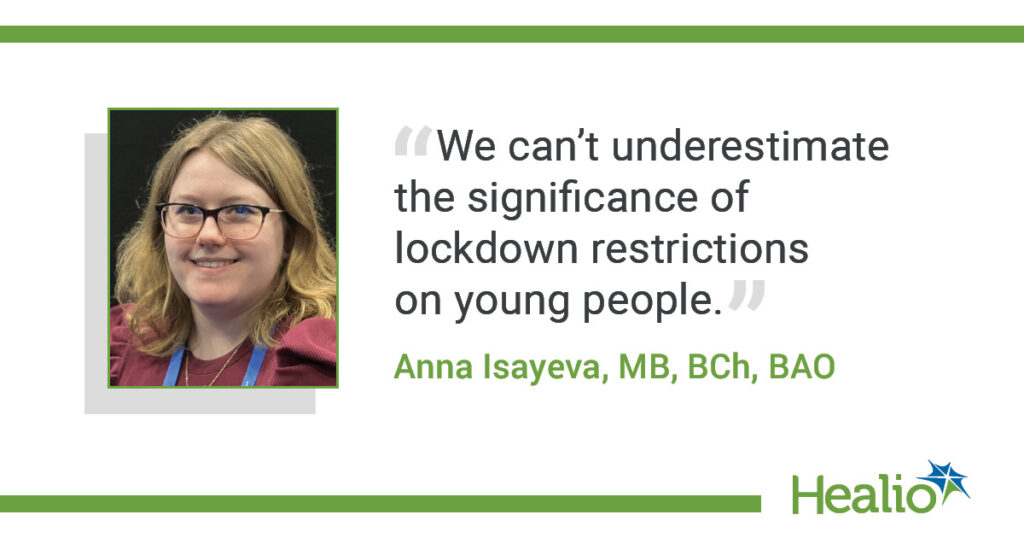Add topic to email alerts
Receive an email when new articles are posted on
Please provide your email address to receive an email when new articles are posted on .
“
data-action=”subscribe”>
Subscribe
We were unable to process your request. Please try again later. If you continue to have this issue please contact customerservice@slackinc.com.
Back to Healio
Key takeaways:
Referrals increased after the reinitiation of curfews.There was no significant difference in mean BMI and lower rates of psychiatric comorbidity.
NEW YORK — Referrals for eating disorder treatment spiked during the COVID-19 pandemic, with patients more likely to present with eating disorder as a primary diagnosis, according to a poster at the American Psychiatric Association annual meeting.
“What I would love for clinicians to get out of this is that we can’t underestimate the significance of lockdown restrictions on young people,” study author Anna Isayeva, MB, BCh, BAO, from University College Dublin School of Medicine, told Healio at the meeting. “Our work focused on Turkish specific lockdown restrictions, but I think it’s a little generalizable because of the shared characteristics between those restrictions.”

In a retrospective cohort study of 176 adolescents aged 10 to 18 years diagnosed with an eating disorder between September 2019 and August 2021, Isayeva and colleagues examined the characteristics of referrals to Ankara City Hospital in Turkey to compare before versus during the pandemic.
Of those admitted for an eating disorder during the study period, 12.5% were admitted prior to the COVID-19 pandemic, and 87.5% were admitted during the pandemic, with the average number of referrals per month spiking from 3.67 pre-pandemic to 8.56 during the pandemic.
The sex distribution of patients who were referred was similar prior to and during the pandemic, but patients were significantly older during the pandemic compared with before the pandemic (P >.001). Patients also had fewer psychiatric comorbidities during the pandemic compared with before the pandemic. The researchers found no significant difference in mean BMI percentage assessment before and during the pandemic.
Referrals spiked after the reinitiation of curfews, and adolescents were more likely to present with an eating disorder as a primary diagnosis than prior to the pandemic.
“Don’t underestimate the impact of COVID-19, and be prepared to offer preventive care services to screen for and identify the presence of eating disorders,” Isayeva said.
Sources/Disclosures
Collapse
Source:
Isayeva A, et al. Exploration of the characteristics of admissions for eating disorders in adolescents pre and post COVID-19 in Türkiye: Lessons gained for the future. Presented at: American Psychiatric Association Annual Meeting; May 4-8, 2024; New York.
Disclosures:
Isayeva reported no relevant financial disclosures.
Add topic to email alerts
Receive an email when new articles are posted on
Please provide your email address to receive an email when new articles are posted on .
“
data-action=”subscribe”>
Subscribe
We were unable to process your request. Please try again later. If you continue to have this issue please contact customerservice@slackinc.com.
Back to Healio

